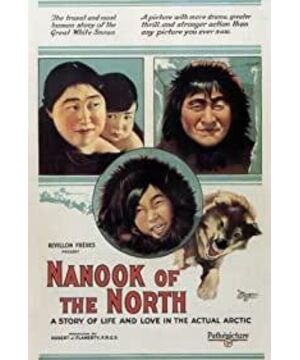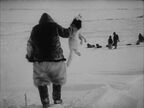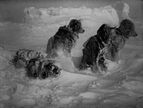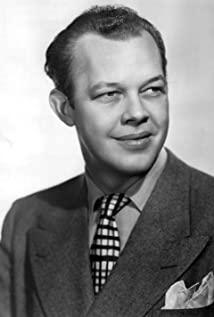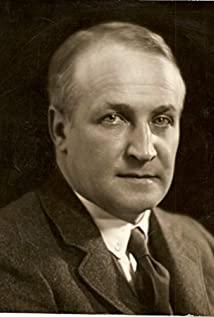During the epidemic, I watched "Nanuk of the North" seriously and was shocked. Aside from the starvation results of the Nanook family and the performance component of Nanook, I love the structure and pacing of this documentary.
The first impression is that it is very clean and straightforward. The simple subtitles are in the front, and the black and white pictures are in the back. Almost every two or three shots needs to be inserted. Before the film starts, a large paragraph of text is used to introduce the background. Although the use of this form is due to the fact that the sound film technology has not yet been produced, it now seems to have a unique aesthetic sense of form, which is more real and heavy. The subtitles are very concise, and most of the time they just describe Nanook's actions objectively, and the pictures are like footnotes for the subtitles. The use of shots is also very restrained, without a lot of empty shots and rendering, because the environment is included in the middle of the narrative; the number of shots in a scene is very limited, but the amount of information in a single shot is very large, but it speeds up the rhythm of the entire film, even if there are The bland places don't procrastinate either. The editing style and the content of the work can be said to complement each other, showing the primitive and simple image of Nanouk and the group of Eskimos he represents.
The second shocking thing is the content of the work. Flaherty condenses the life of an Eskimo into more than seventy minutes through several typical scenes, and each frame is full of primitive appeal to modern people. Dealing with white people (and the inquisitive, tooth-biting footage of Nanook facing the gramophone), hunting salmon alone, hunting walruses with his mates, and the arduous winter trek with a family to build the "Igloo" ", hunting seals with the help of family members, and taming wolf-like sled dogs, these are scenes we have never seen before. "It turns out that some people really live like this." The film is full of freshness from beginning to end. Many details in the scene - the boat that can accommodate many people lying on it, lying on the ice with ivory as bait, pulling out the arctic fox from the ice, windows made of ice and reflecting sunlight with snow are all if not in the That kind of environment is unimaginable. I have seen a lot of discussion on the authenticity of this work on the Internet, and I think that the Eskimos were already hunting with rifles instead of harpoons in the time of Nanook, but I don't think this is a problem - Nanook used It is his father's hunting method, which also reproduces a historical reality. Although there are no Eskimos living in that completely primitive way in that time and space, Nanook is the closest person to that way of life, and reproducing such a life is more urgent than presenting the reality of Nanook's present. , more revealing. Taking a step back, that's far more real than the means of "real reproduction" on the screen today.
People always think that the people of the wild land means savage, ignorant, and uncivilized, but this is all based on judging the subject's own environment. Living in the barren lands of the Arctic, the way of life and national character they developed may be useless in modern society, but it is a magic weapon that supports the survival and reproduction of their nation. In such icy world, being able to maintain the survival of a nation in such a primitive way is definitely a feat that can be recorded in the history of mankind. It proves to what extent human beings can be tenacious and tenacious, and how human beings can survive in order to survive in the face of the environment. the limit of one's own potential.
View more about Nanook of the North reviews


